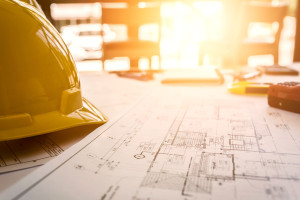 Construction is a dangerous job. Construction workers engage in any number of hazardous activities that expose them to injuries, including falls from roofs, being struck by heavy equipment, being pinned between pieces of equipment, electrocution, asbestos exposure, and injuries caused by unguarded machinery.
Construction is a dangerous job. Construction workers engage in any number of hazardous activities that expose them to injuries, including falls from roofs, being struck by heavy equipment, being pinned between pieces of equipment, electrocution, asbestos exposure, and injuries caused by unguarded machinery.
OSHA (Occupational Safety and Health Administration) has established a comprehensive set of standards known as the Construction Industry Standards, which are designed to protect workers from hazards commonly found in construction environments. These standards cover a wide range of safety and health aspects, including but not limited to:
- Fall Protection: Construction workers are frequently exposed to the risk of falls from heights. OSHA requires employers to provide fall protection systems, such as guardrails, safety nets, or personal fall arrest systems, to prevent workers from falling off elevated surfaces.
- Scaffolding and Ladders: OSHA provides detailed requirements for the safe use of scaffolding and ladders, including proper assembly, load capacities, and regular inspections to prevent accidents.
- Excavation and Trenching: OSHA has specific regulations to ensure worker safety during excavation and trenching operations. These regulations address issues like proper protective systems, safe entry and exit, and regular inspections to prevent cave-ins.
- Electrical Safety: Construction sites involve electrical hazards, and OSHA mandates safety measures to protect workers from electrical shocks, burns, and other related dangers. These measures cover areas such as wiring, grounding, use of electrical tools, and lockout/tagout procedures.
- Hazard Communication: OSHA requires employers to establish a comprehensive hazard communication program that includes proper labeling, safety data sheets, and employee training on the handling and use of hazardous substances and chemicals.
- Personal Protective Equipment (PPE): OSHA standards emphasize the use of appropriate personal protective equipment, such as hard hats, safety glasses, gloves, and respiratory protection, to safeguard workers from various job-specific hazards.
- Equipment and Machinery Safety: OSHA has specific requirements for the safe operation and maintenance of construction equipment and machinery, including safeguards, operator training, and regular inspections.
According to OSHA, prime contractors, and subcontractors are equally responsible for complying with safety standards while performing job duties. They must use “reasonable care” to ensure workers’ safety, including making sure the required safety practices are followed. What does OSHA define as reasonable care? It generally requires periodic worksite inspections, implementation of a safety program, along with establishing a system for correcting hazardous working conditions. Employers can find help in establishing their own safety programs by reading OSHA’s recommended practices for safety and health in construction.
If OSHA finds violations during an inspection, the primary contractor, subcontractor, and any other parties deemed responsible could potentially be cited. The time to be concerned about construction site safety is before accidents occur, and one way to be prepared is by offering OSHA training. The OSHA training courses train construction workers and supervisors on safety regulations and requirements. Supervisors are trained to recognize safety hazards along with ways to predict, avoid, control, and prevent hazards on the job site.
We want your clients to stay safe on the job site. C&S Specialty Underwriters specializes in liability insurance for the construction industry. Give us a call to discuss a complete liability insurance package for your contractor clients.

Recent Comments